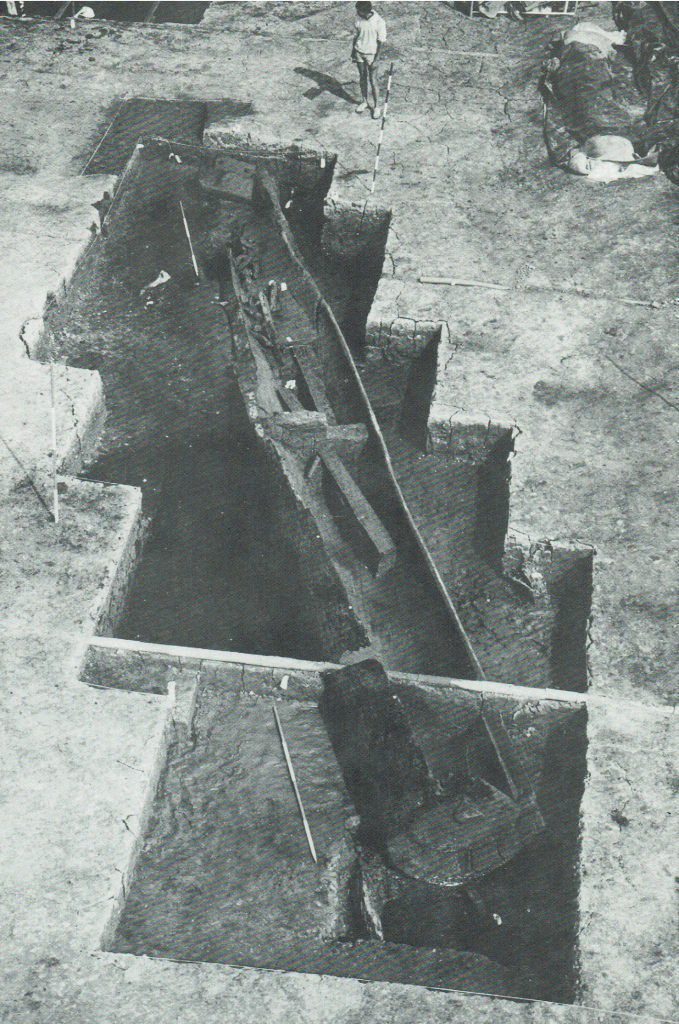
Today’s picture is a photo, presumably taken from a crane gib, of the excavation of what might be called Wallingfen’s celebrity. About 2400 years ago a huge, hollowed-out log-boat sank in a channel in the marsh not far from the current course of the River Foulness. In 1984 it was fortunate that archaeologists were field walking soon after a field belonging to Hasholme Hall had had field drains laid, this resulting in narrow trenches cris-crossing the field. In one such narrow trench was an off-cut of wood that suggested it might be part of a log-boat, and excavation began. It was the natural conditions of Wallingfen that had preserved the organic material of the log-boat, the anaerobic conditions excluding air (it is an irony of Nature that water preserves organic materiel, it is a mix of air and water that causes decomposition).
The boat (log canoe) had been created from a hollowed-out single oak tree-trunk except at the stern end where a grove had been cut into the inner surface of the log and into which a board had been slotted to create the stern of the boat.The boat,at a length of 41 feet and a width of five feet, had been made from a huge tree and, as Wallingfen was an unlikely area in which oaks would grow, it had been constructed elsewhere and, on the day of its sinking, had been rowed to this watery inlet for some purpose.
The ‘rescuing’ of the boat from the silts and muds received a lot of media attention and was achieved by encasing the boat in a metal cradle, dragging this to the surface and then loading onto a lorry to be taken to the National Maritime Museum at Greenwich for a decade of spray cleaning and conservation by being injected with a special wax.
Why did it sink? No human remains were discovered on site.